Aquafaba is the starchy liquid left over after cooking beans or the liquid found in a can of beans (especially chickpeas). Learn how to make aquafaba from scratch or a can of beans, how to store it, and the many ways you can use it in your cooking and baking.
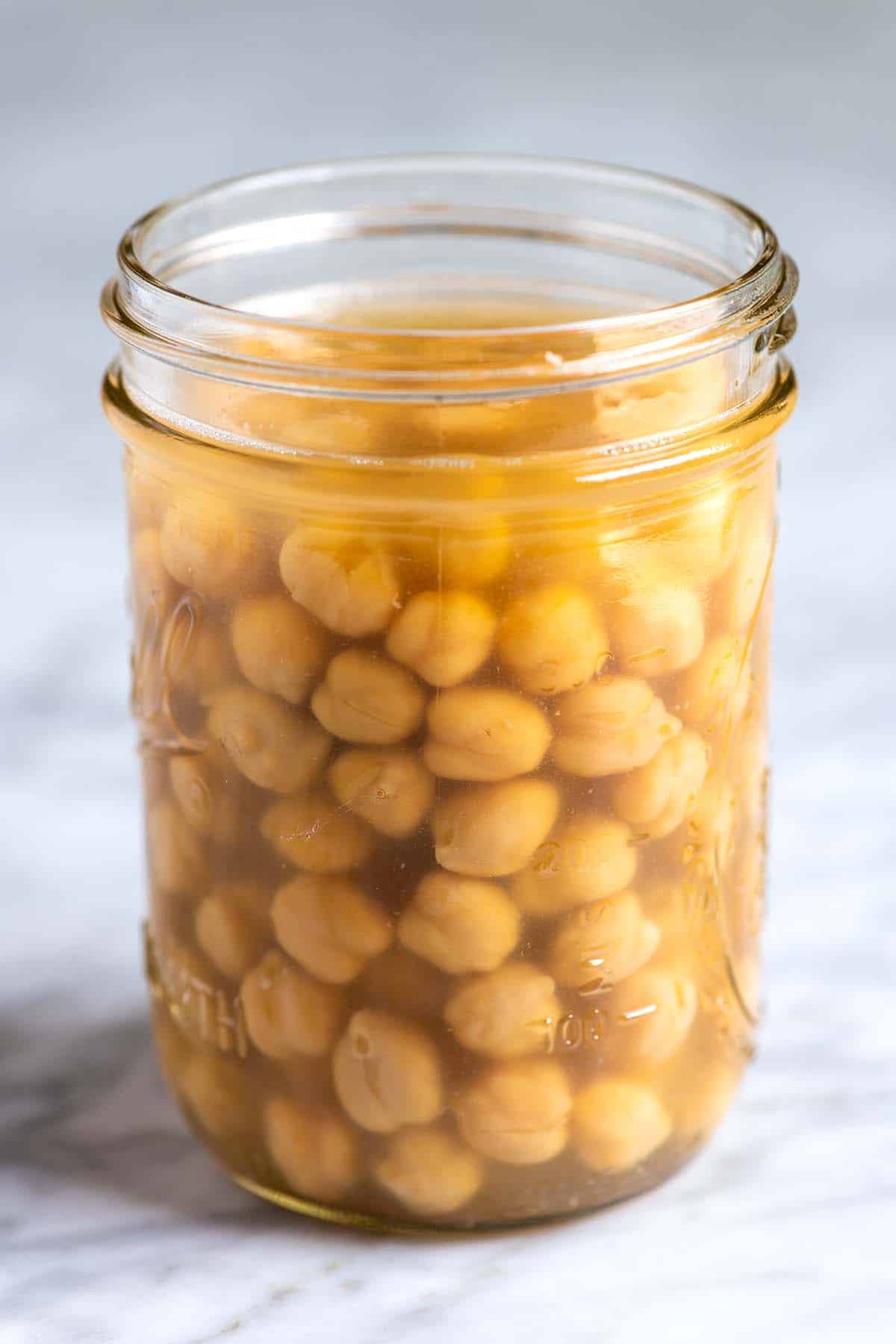
While aquafaba can come from any bean, we usually refer to the liquid from cooking chickpeas (garbanzo beans) as aquafaba. Chickpeas tend to produce the best, most starchy liquid. That’s why chickpea aquafaba is the most common type used in recipes.
Not long ago, we used to discard this liquid, but now we know better! When beans are cooked or canned, the liquid becomes starchy, and this starchiness is what makes aquafaba so special.
What to Do With Aquafaba?
It was only in 2015 that Goose Wohlt, a software engineer looking for ways to make egg-free meringues, discovered the magic of bean water (source). We already know that it works as a thickener, stabilizer, binder, and emulsifier, but it’s safe to say that aquafaba uses are still being discovered. Here are the most common uses that we know of. If you know more ways to use it, leave it in the comments!
- Replace egg whites or whole eggs in baked goods like homemade pancakes and muffins.
- Make egg-free meringue or pavlova
- Make whipped desserts vegan, like chocolate mousse.
- Make vegan buttercream
- Make vegan whipped cream or ice cream
- Make vegan mayonnaise or aioli
- Make extra creamy hummus
- Make vegan butter
- Thicken soups
Another egg replacer: We also love flax eggs when replacing eggs in recipes.
How to Make Aquafaba
The easiest and most reliable way to make aquafaba is to use the liquid from a can of chickpeas. To avoid excess saltiness, choose low-sodium or no-salt-added chickpeas. For a starchier aquafaba, give the can a good shake before opening it.
You can also make aquafaba from scratch by cooking dried chickpeas. This method requires more effort, as you’ll need to simmer the cooking liquid until it thickens to the consistency of canned chickpea liquid, which resembles egg whites.
Here’s how to make aquafaba from scratch:
- Soak 1 pound (2 cups) of dried chickpeas in ample water overnight. They will expand as they soak.
- Drain the soaked chickpeas and place them in a large pot with 8 cups of unsalted, unseasoned water. Bring to a boil, reduce heat, and simmer until tender (1 ½ to 2 hours).
- Turn off the heat, cover the pot, and let the chickpeas cool completely in the cooking liquid. This will help release more starch.
- Remove the chickpeas with a slotted spoon.
- Bring the remaining liquid to a simmer and cook for 30 to 45 minutes until it reduces and thickens to a yellowish, viscous consistency, similar to canned chickpea liquid.
When making aquafaba from scratch, avoid introducing oil or fats into the liquid. These can cause problems if you plan to whip the liquid later.
How to Substitute Eggs with Aquafaba?
Aquafaba has many uses, but one of our favorites is as an egg replacer in pancakes and baked goods like muffins. It does an excellent job of mimicking many of the characteristics of eggs in baking. We use aquafaba to make these delicious vegan blueberry muffins!
Here’s a general rule of thumb for substituting aquafaba for eggs:
- 3 tablespoons of aquafaba = 1 large egg
- 2 tablespoons of aquafaba = 1 egg white
You can use aquafaba in three ways when replacing eggs:
- Lightly Whisked: Use a hand whisk to create a light, frothy consistency, which works well as an egg binder in cookies, pancakes, and muffins.
- Soft Peaks: Whip aquafaba with an electric mixer or stand mixer until it forms soft peaks, perfect for adding airiness to batters for waffles, muffins, and cupcakes.
- Stiff Peaks: Whip aquafaba with an electric or stand mixer until it forms stiff peaks. You can then use it to make meringue, ice cream, or even vegan macarons.
We’ve found the most foolproof way to whip aquafaba is with a stand mixer and a small amount of cream of tartar. While you can use a hand mixer or food processor, a stand mixer with its large whisk attachment works best.
You don’t need cream of tartar to whip aquafaba, but we highly recommend it. Cream of tartar helps stabilize the foam, preventing it from deflating quickly. We’ll share a full recipe below, but remember, a pinch of cream of tartar goes a long way!
Whipping aquafaba can take time, so keep going even if it doesn’t happen instantly. Keep whipping! Some people report taking up to 10 minutes, but soft peaks usually form within 4 or 5 minutes.
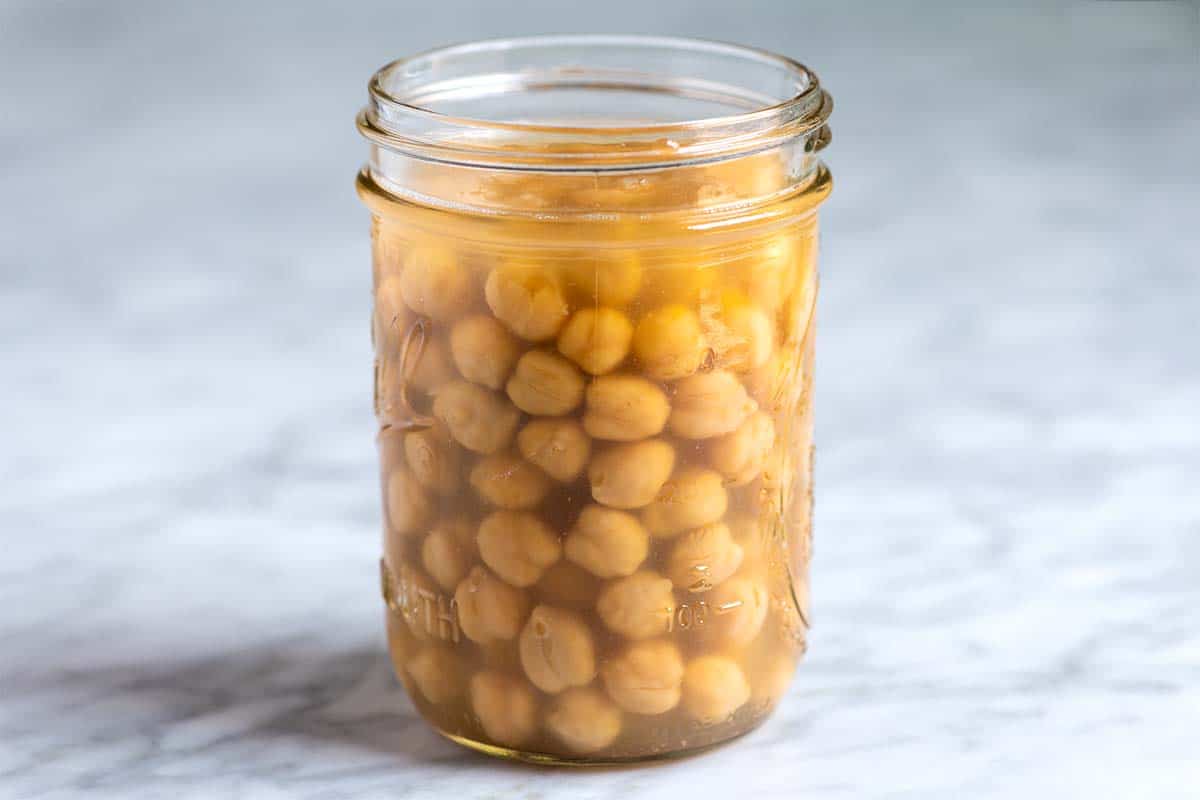
How to Make Aquafaba (Ultimate Guide)
- PREP
- TOTAL
Aquafaba is the starchy liquid in which beans have been cooked (especially chickpeas). It is also the liquid in a can of beans. It can be used in many ways (see our article). We use it most often as an egg replacer.
Aquafaba can be used as an egg replacer in three ways: (1) lightly whisked as a binder in cookies, pancakes and muffins, (2) whipped into soft peaks and folded into batters that benefit from added airiness like waffles, muffins and cupcakes, and (3) whipped into stiff peaks and used to make meringue, ice cream or vegan macarons.
When choosing which state to use aquafaba in, you will most likely need it lightly whisked or whipped into soft peaks. Lightly whisked aquafaba does a fine job in most recipes, but you will likely see even better results when you substitute that with whipped aquafaba. The recipe below is for whipped aquafaba.
You Will Need
1 (15oz) can no salt added chickpeas or 1/2 cup reduced chickpea cooking liquid, see notes
1/4 teaspoon cream of tartar
Directions
1Vigorously shake the unopened can of chickpeas, and then open and drain the beans, reserving the liquid. If there are lots of little bits of beans in the liquid, pour it through a fine mesh strainer to remove them.
2Lightly whisk the liquid, then measure the amount of aquafaba you need. As a guide, you will need three tablespoons of liquid when substituting a whole egg and two tablespoons when substituting one egg white.
3Choose how you would like to add the aquafaba to your recipe: lightly whisked or whipped.
4For lightly whisked, add the measured liquid to a wide bowl and beat by hand with a wire whisk until it looks frothy, about 1 minute. You do not need to add the cream of tartar.
5For whipped aquafaba, add the measured amount to a stand mixer fitted with the whisk attachment. Add the cream of tartar, and then turn the mixer on.
6Whip on high speed until your desired fluffiness. This takes some time, so be patient. We usually stop mixing after 4 to 5 minutes. Remove the whisk and turn it upside down to tell when it is properly whipped. Soft peaks will hold at first and then slowly melt back into themselves after a second. Firm peaks will hold and look more distinct, but the tips will still fold back on themselves. Be careful not to overwhip as this can cause it to lose its airiness and deflate.
Adam and Joanne's Tips
- Cooking chickpeas for aquafaba: Canned chickpea liquid is the most foolproof option for aquafaba. However, you can make it using the leftover cooking liquid from cooking chickpeas. If you are making it from scratch, you will need to remove the cooked beans, and then simmer the cooking liquid until thickened and it resembles the viscosity of the liquid that comes out of a can of beans. Tips for doing this are provided in the article above.
- Don’t have a stand mixer? Try a hand mixer or food processor instead. The stand mixer is the best tool, but the other two appliances will work in a pinch.
- How long does aquafaba last? Store unwhipped aquafaba in an airtight container in the fridge for up to 5 days. Freeze aquafaba for 3 months. For ease, consider freezing it in tablespoons in an ice cube tray. When it’s completely frozen, pop the frozen aquafaba out from the tray, and then place it into a resealable freezer-safe bag or container and freeze for months. When ready to use it, thaw the number of tablespoon cubes you need in the fridge, and then use them in your recipes.
- The nutrition facts provided below are estimates. We used data from this website (all about aquafaba).

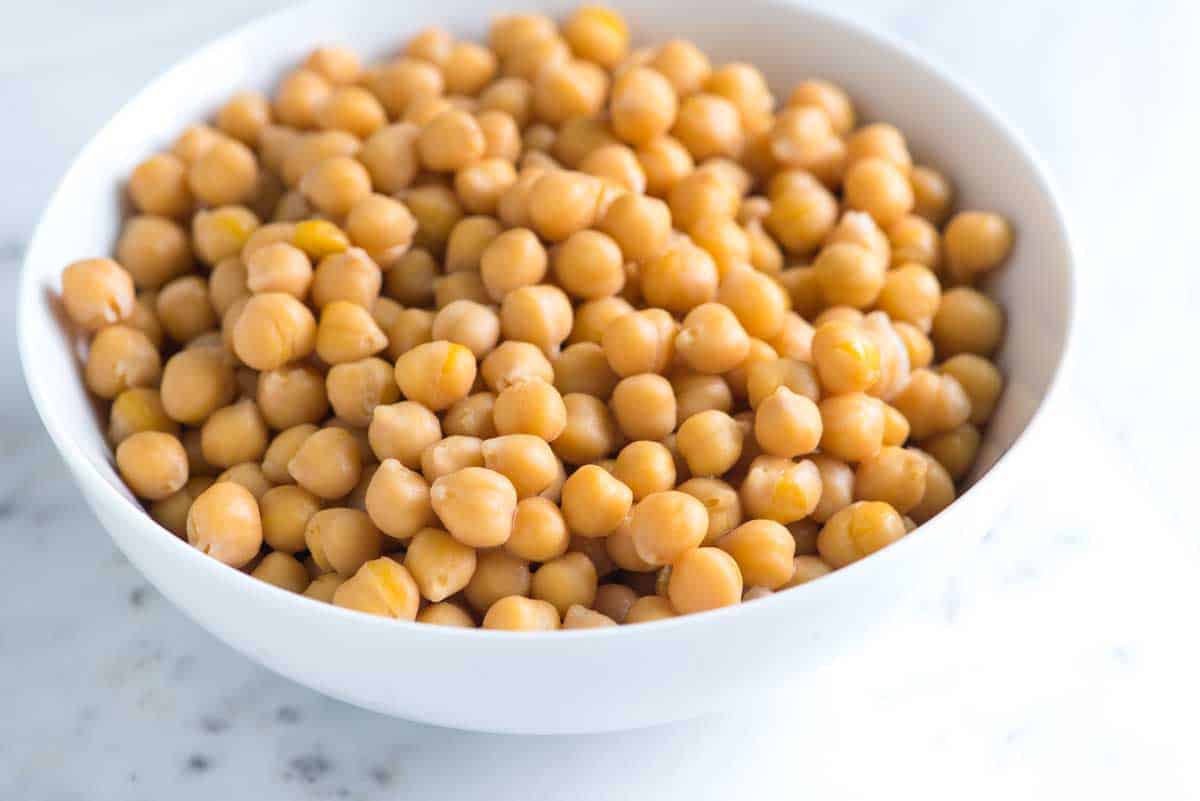
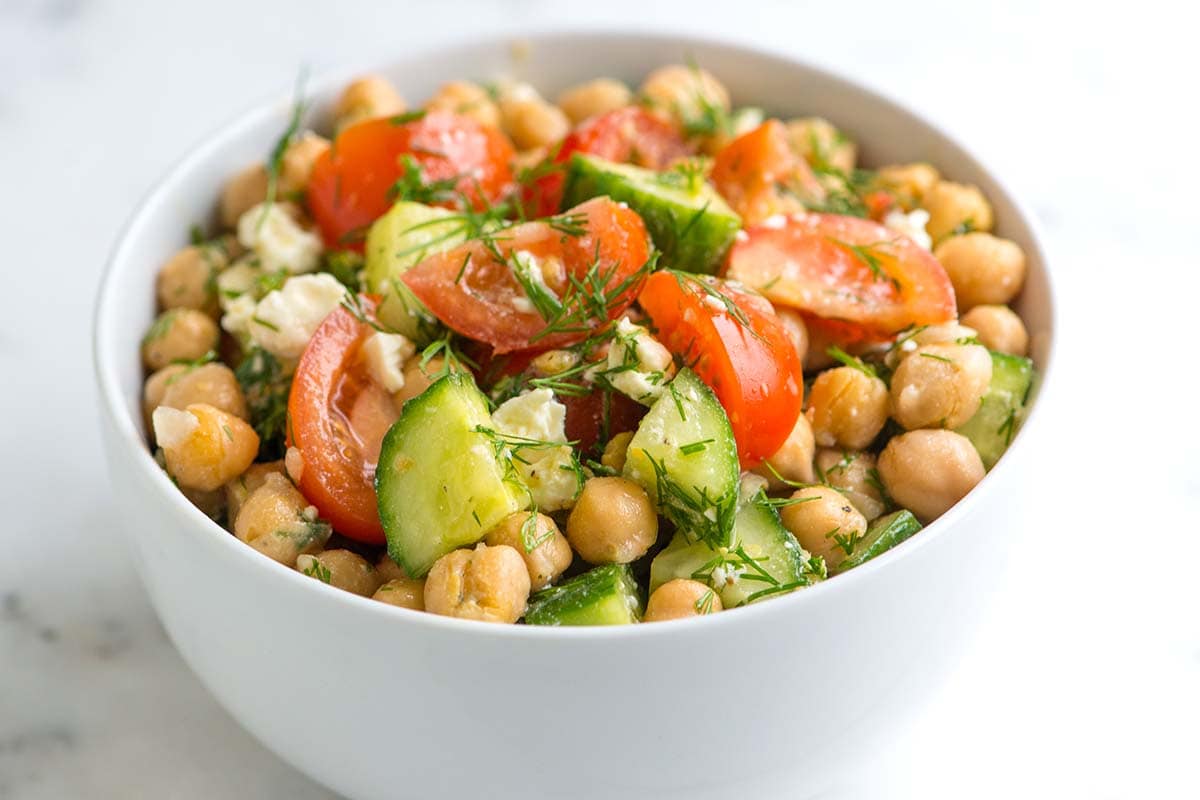
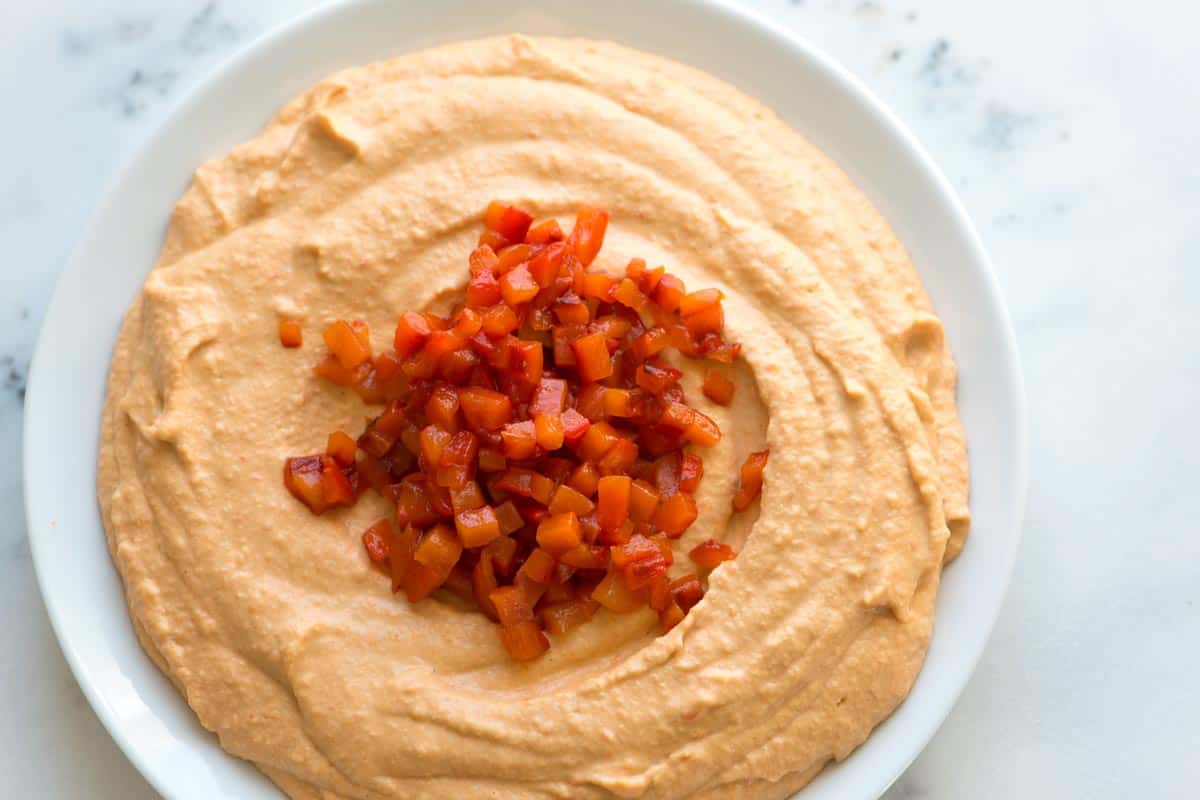
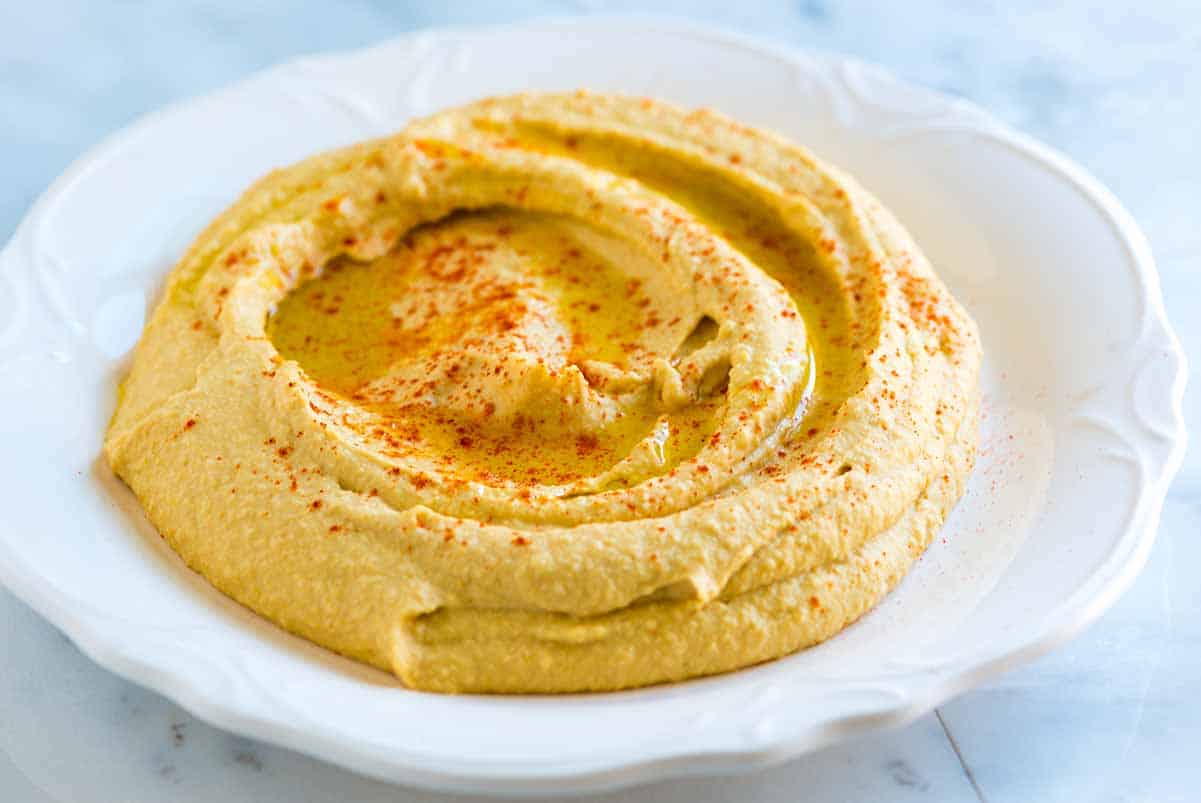

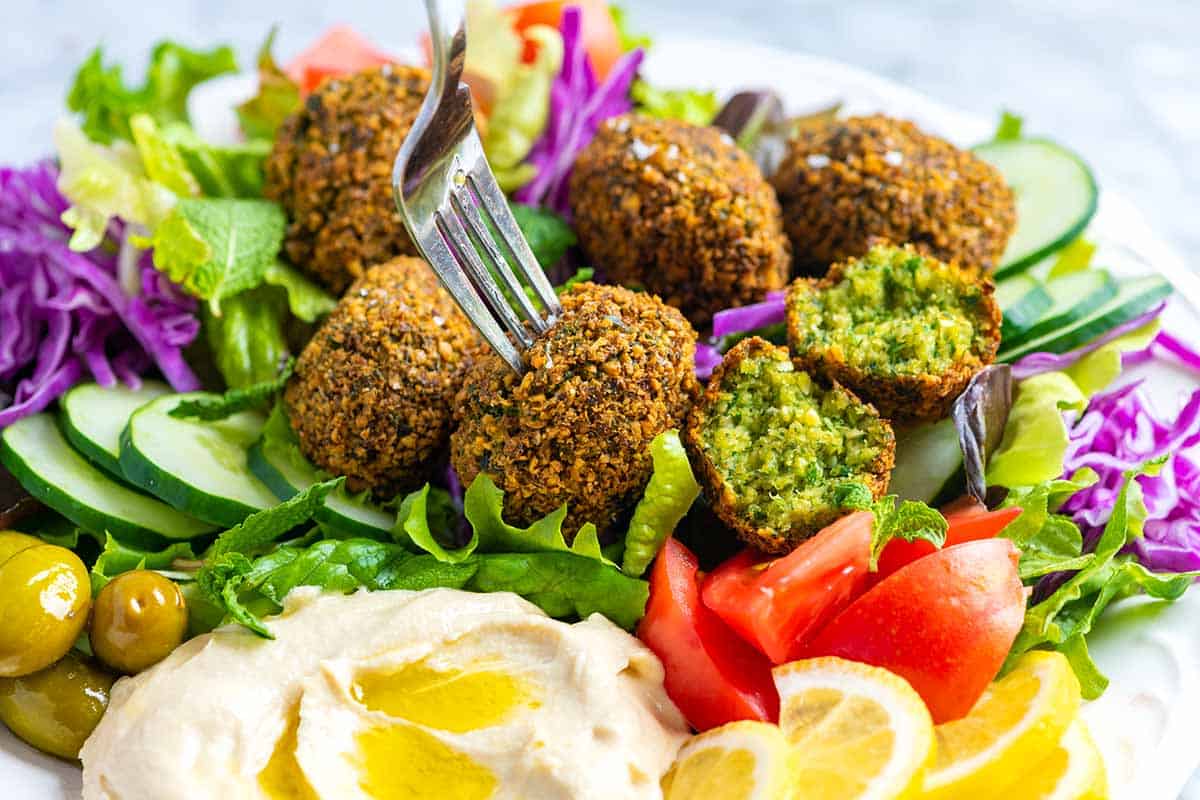


I love discovering new uses for ingredients that are kinda new to me.
About a year ago, I started making more “global” recipes and using ingredients completely new to me.
Believe it or not, the only thing I knew about chickpeas/garbanzo beans was they’re used to make hummus. Now, they are a staple in my pantry. But I hate any sort of food waste and am always trying to find ways to use whatever’s left over when I cook. Aquafaba is definitely one of those. Thank you for sharing this info with us!
I was a little disappointed at the amount of aquafaba I got out of the recipe. I used the 4:1 water to beans ratio (4 cups water to 1 cup dried chick peas) and at the end of cooking, only had about 2 tablespoons. I didn’t dare try to reduce it. Froze it and am hoping it still works in salad dressing.
If I use the liquid from the chickpeas can I add regular water to the beans to use them later? Can I use the new liquid for another recipe that uses eggs?
The drained beans should last 3 to 4 days in the fridge. I do not recommend using the water for making aquafaba.
Wonderful! I learned to make a delicious salad using aquafaba while living in Spain. The salad is simply a mix of garbanzo beans, chopped tomato, bell pepper and onion and some sliced green olives. The marinade/dressing is aquafaba blended with a little anchovy paste, drizzle in olive oil with the blender running until it’s emulsified, thicker and white. That liquid gets seasoned with vinegar, salt and pepper. Pour it over the salad so it’s covered in the liquid. Dunk crusty bread in the sauce. It’s much better the next day.
The September 2023 issue of Men’s Health magazine recommends using 1 oz of aquafaba to top off a whiskey sour, as an alternative to an egg white. Since my girlfriend likes whiskey sours, I’ll experiment with aquafaba this weekend.
I just tried a great cocktail that used aquababa in lieu of egg whites! Irish whiskey, ginger liqueur, rosemary simple syrup, fresh lemon juice and aquafaba. Not sure of the ratios, but I will be working on this at home until I get it right.
General rule of thumb (may vary slightly if the liquid right out of the can is thicker or thinner than usual; if it is thinner recommend simmering to reduce and thicken for better results): Just 1 tablespoon of aquafaba is about the same as one yolk, 2 tablespoons are about the same as one egg white, and 3 tablespoons can be used for a whole egg. I’ve used whipped aquafaba as an egg substitute for meringue cookies. They were a tad less puffed up (had less height than with egg whites) but not enough to really matter. Maybe a quarter less height. Nobody noticed or complained! They didn’t even realize they weren’t made with egg whites. I accidentally overwhipped the first batch of aquafaba though when left stand mixer for only a moment to do something else and had to start over. Really need to stand right there watching so can stop right away. I just used the botched batch in a bread recipe instead.
I use it as well. It makes an equally great foam, doesn’t stink of raw egg and makes all the cocktails vegan.
When you don’t need to use the juice for cooking use the soak water (not from canned beans) on your plants. They love the nutrients. This applies to any grain or bean.
I love your tip about the water that beans or grains have been soaked in being good for plants. Thank you for sharing it!
The bean liquid egg replacement is not only a vegan alternative but also an economically viable alternative. It could be very useful for those off grid as well Thanks